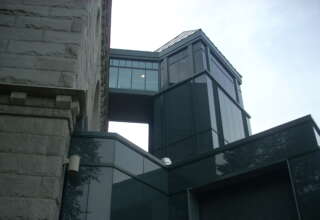
Financial wealth in the modern era was usually a less stable form of capital than was property (as the primary form of capital) in the premodern era. The new knowledge capital of the postmodern era is even less stable and elusive than was financial wealth in modern times. As Harlan Cleveland prophetically noted twenty years ago, information is expandable without any obvious limits, it is also compressible (to be stored on rapidly shrinking silicon chips), transportable, substitutable (replacing capital, labor or physical materials), diffusive (leaking out everywhere), and, most importantly, shareable.[xxiii] All of this amounts to a growing recognition that our increasing reliance on information changes the very nature of the workplace and the men and women who occupy this workplace.
Knowledge workers can readily take their expertise elsewhere and corporate lawyers have yet to find a way of effectively patenting or somehow legally claiming ownership of the mind and ideas of its employees. As Drucker recently suggested:[xxiv]
“. . . knowledge workers own the means of production. It is the knowledge between their ears. And it is a totally portable and enormous capital asset. Because knowledge workers own their means of production, they are mobile. Manual workers need the job much more than the job needs them. It may still not be true for all knowledge workers that the organization needs them more than they need for organization. But for most of them it is a symbiotic relationship in which they need each other in equal measure.”
Thus, the knowledge worker claims a form of capital that always remains with them and that is always renewable even after being spent in the generation of a new idea. The only hazard that the knowledge worker encounters is that of becoming dated—a fear that is particularly relevant for knowledge workers in scientific and technological fields.
Shifting Worker Values
As we seek to make sense of the new reality of the knowledge worker, it is important to gain a clear sense of both the premodern and modern worker’s values. We will discover that one set of worker values does not replace another set. Rather each set of values builds on the previous set. Thus, the postmodern worker seeks out a job and organization that is responsive to both premodern and modern values—as well as the distinctive values of the postmodern era.
The Premodern Worker
For workers in a premodern society, primary concern must necessarily focus on the fundamental needs of survival: shelter and nutrition. Premodern men and women look for enough to eat and drink and for a place that will protect them from the elements. These are rather simple needs, yet they are not available to many people in our world. As recently articulated in many different venues, we can gain a clear sense of the state of many people on our planet if we envision that the entire population was represented in a small village of 100 people. Of these 100 people, one would own all the land, live in a lovely home and consume most of the food. This person would be the American. Of the remaining 99 residents, over three quarters would be struggling to find a sufficient supply of food and water, and more than one quarter would be living out in the open without any shelter. Thus, for most people living on our planet, the basic needs of the premodern world are ever present.







